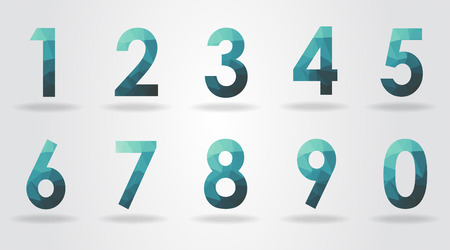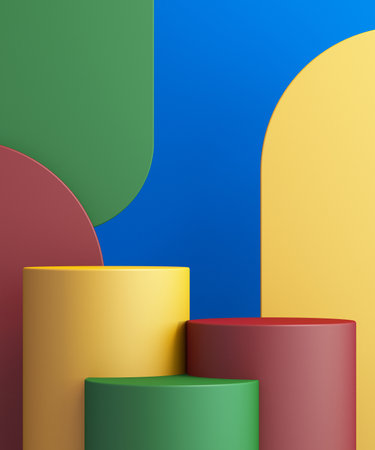Introduction to Aura Colours
The concept of auras—those subtle fields of energy believed to surround every living being—has intrigued humanity for centuries. In the United Kingdom, the fascination with aura colours has deep historical roots, weaving together threads from ancient druidic traditions, Victorian spiritualism, and contemporary holistic practices. While the origins of aura reading can be traced back to various global cultures, its interpretation within the British Isles often reflects a unique blend of scepticism and curiosity. Today, as interest in personal wellbeing and mindfulness grows among modern Brits, understanding aura colours is becoming increasingly relevant. Whether discussed over a cup of tea or explored in a local wellness workshop, aura colours offer a novel lens through which people can reflect on their emotional and spiritual health. This comprehensive guide aims to demystify the meaning behind these colourful energies, explain their cultural significance in the UK, and show why they continue to captivate British minds in our ever-evolving society.
2. The Spectrum Explained: Understanding Aura Colours
When discussing auras in the context of British culture, its important to approach the subject with both curiosity and a healthy dose of pragmatism. While interpretations of aura colours have roots in spiritual traditions worldwide, many modern Brits find themselves drawn to these ideas as tools for self-reflection and personal growth rather than dogmatic belief. Lets explore the most common aura colours, what each is believed to represent, and how these meanings might be viewed through a distinctly British lens.
Aura Colour |
General Meaning |
British Perspective |
|---|---|---|
Red |
Vitality, energy, passion, sometimes anger or stress. | Often associated with resilience—think of the British “stiff upper lip” and get-on-with-it attitude. Red may also evoke the determination seen in everyday life across the UK. |
Orange |
Creativity, enthusiasm, sociability. | Seen in creative communities from London to Glasgow. Orange auras can be linked to the value placed on wit, charm, and community spirit in British society. |
Yellow |
Optimism, clarity, intellect. | The classic British sense of humour and understated optimism often shine through here—a yellow aura may indicate someone who finds joy in simple pleasures like a proper cuppa or a sunny day (however rare). |
Green |
Balance, healing, compassion. | Reflects Britain’s love for nature—from rolling countryside to public parks—and the quiet strength found in supporting friends and neighbours. |
Blue |
Calmness, communication, truth. | This resonates with the British appreciation for diplomacy and polite conversation—blue auras often signal someone who values clear communication without unnecessary fuss. |
Purple/Violet |
Spirituality, intuition, imagination. | Tied to Britains rich literary and artistic heritage; purple suggests a connection to tradition but also open-mindedness towards new ideas and perspectives. |
White/Silver |
Purity, openness, higher consciousness. | Might be interpreted as a sign of someone open-minded yet grounded—traits often admired in British culture’s blend of tradition and progressiveness. |
Pink |
Love, kindness, sensitivity. | The warmth behind the reserved exterior; pink may appear in those who embody quiet acts of kindness and the famed British politeness. |
Bringing It All Together
The meaning of each aura colour can vary widely depending on personal experience and cultural background. In Britain, where understatement is valued as much as authenticity, interpreting auras is less about mystical claims and more about practical self-awareness. Whether you find yourself resonating with the calm blue or vibrant red, understanding these colours offers an opportunity to reflect on your own character—a refreshingly down-to-earth way to engage with an age-old concept.

3. Practical Methods for Sensing and Seeing Auras
For many Brits curious about aura colours, the topic can feel both mystical and slightly out of reach. Yet, with a bit of practice and an open mind, anyone can try their hand at sensing and seeing auras in everyday life. Here’s a practical, no-nonsense guide tailored to the British reader.
Setting the Scene: Everyday Environments
You don’t need a candlelit séance or crystal balls to begin; your living room or local park will do just fine. Choose a quiet spot with natural light—overcast British afternoons are actually ideal, as they reduce harsh glare. Sit comfortably, relax your shoulders, and take a few deep breaths. The goal is to create a calm mental space, not unlike preparing for mindfulness or meditation.
Observing Auras Around People
Start by focusing on someone you know well—a mate or family member—standing against a plain background. Soften your gaze (think of how you look through fogged-up specs) and concentrate on the area just beyond their body outline. With patience, you might notice a faint shimmer or subtle colour. Don’t worry if nothing appears at first; consistency is key, much like brewing the perfect cuppa.
Sensing Your Own Aura
If observing others feels awkward, try sensing your own aura first. Extend your hand against a neutral wall and gently defocus your eyes. Some people report seeing a pale glow or flashes of colour around their fingers after several attempts. Alternatively, tune into bodily sensations: warmth, tingling, or changes in mood can also indicate shifts in your energy field.
Interpreting What You Notice
British culture tends toward pragmatism—so approach what you see or sense with curiosity rather than judgement. Jot down notes in a journal about any colours or impressions that come to mind. Over time, patterns may emerge. For example, repeated glimpses of blue might coincide with times you feel especially calm or communicative.
Reflecting on Everyday Interactions
Incorporating aura awareness isn’t about being eccentric; it’s another tool for self-reflection and understanding others in daily British life. Whether you’re navigating the morning commute or enjoying a pint at the pub, noticing shifts in energy and colour can offer fresh insights into relationships and wellbeing.
4. Historical and Cultural Contexts in Britain
The concept of auras, though often associated with Eastern philosophies, has deep-rooted connections within British history and culture. Understanding these roots allows us to appreciate how aura colours have been interpreted and integrated into the British way of life, from ancient folklore to contemporary wellness trends.
Ancient Beliefs and Folklore
In Britain’s rich tapestry of myth and legend, the idea of human energy fields appears in various forms. Celtic traditions, for instance, spoke of luminous bodies or “spirit lights” surrounding individuals, especially those believed to possess mystical abilities. Medieval accounts often described saints and holy figures with glowing halos—a motif not unlike today’s aura depictions. These early interpretations set the stage for later spiritual and metaphysical explorations.
Aura Concepts in British Wellness Practices
With the rise of the Spiritualist movement during the Victorian era, there was renewed interest in unseen energies and personal well-being. Aura reading became intertwined with practices such as Reiki, crystal healing, and even homegrown therapies like flower remedies. Today, many Britons engage with these ideas through yoga studios, holistic health fairs, and local energy healers—blending ancient wisdom with modern needs.
Comparing Traditional and Modern Perspectives
| Aspect | Traditional British Context | Modern British Practice |
|---|---|---|
| Interpretation of Auras | Luminous spirits in folklore; halos in religious art | Energy fields linked to emotional & physical wellbeing |
| Main Practitioners | Druids, shamans, clergy | Holistic therapists, yoga instructors |
| Cultural Role | Explained mystical experiences; social cohesion via ritual | Self-care, stress management, personal growth |
| Common Terminology | Spirit light, halo, faerie fire | Aura colours, chakras, biofield |
Folklore Meets Modernity: A Living Tradition
The ongoing fascination with aura colours in Britain is a testament to our enduring curiosity about the unseen dimensions of life. Whether discussed over a cuppa at a local wellness centre or referenced in seasonal rituals on the moors, the British approach combines respect for heritage with open-minded exploration. This blend ensures that understanding aura colours remains both relevant and uniquely British.
5. Misconceptions and Scientific Perspectives
When it comes to aura colours, there is no shortage of myths and misunderstandings swirling around the subject. In the UK, where our tradition of healthy scepticism often reigns supreme, it’s important to separate fact from fiction while keeping an open mind. First and foremost, a common misconception is that auras are visible to everyone or that their interpretation follows strict universal rules. In reality, accounts of seeing auras are largely anecdotal, and interpretations can vary significantly depending on cultural background and personal beliefs.
Another misunderstanding lies in equating aura reading with established medical diagnostics or psychological profiling. While some proponents suggest that certain aura colours might indicate physical health or emotional state, there is currently no scientific evidence directly linking aura colours to specific conditions. The modern British approach encourages us to treat such claims with critical thinking—appreciating the historical and cultural contexts without taking them as scientific fact.
From a scientific standpoint, most research suggests that what some people perceive as auras may be explained by visual phenomena such as afterimages or synaesthesia. Studies have yet to identify any measurable energy field around the human body that corresponds to the traditional descriptions of auras. The consensus within the scientific community is one of cautious observation: while personal experiences shouldn’t be dismissed outright, extraordinary claims require extraordinary evidence.
However, this doesn’t mean all interest in aura colours should be written off as mere superstition. Exploring aura interpretations can foster self-reflection and offer a framework for discussing emotions, relationships, and wellbeing. As many Brits know from their fondness for mindfulness and introspection, engaging thoughtfully with such practices can have value—even if we do so with a raised eyebrow and a dash of irony.
In short, understanding aura colours requires navigating between uncritical acceptance and outright dismissal. By combining open-minded curiosity with our trademark British pragmatism, we can appreciate the allure of auras while remaining grounded in reason.
6. Integrating Aura Knowledge into Modern British Life
Practical Applications for Everyday Living
For the modern Brit, understanding aura colours needn’t be confined to esoteric circles or spiritual retreats. Rather, it can be seamlessly woven into daily routines, enhancing wellbeing, communication, and personal growth in a manner that resonates with British sensibilities—think understated mindfulness over flamboyant display. Here are some pragmatic tips for bringing aura awareness into your life:
Wellbeing: Subtle Self-Care the British Way
Begin by quietly observing your own aura through simple meditation or reflection, perhaps with a cuppa in hand. If you notice persistent muddy hues, such as grey or brown, consider it a gentle nudge to check in on your stress levels or emotional health. In true British fashion, opt for practical self-care: a brisk walk in the park, a chat with mates at the local pub, or taking five for a proper brew. These small acts can subtly shift your aura towards brighter shades, promoting balance without fuss.
Communication: Fostering Understanding and Empathy
Brits are famed for their understated approach to conversation. Use your awareness of aura colours to ‘read the room’—if someone’s energy feels tense (a sharp red or murky blue), respond with patience and tact rather than confrontation. This skill is particularly useful in professional settings or family gatherings where harmony is valued. Gently mirror positive colours by keeping your tone calm and open; even subtle shifts can encourage better rapport and mutual respect.
Personal Growth: Quiet Confidence in Change
Embracing personal development doesn’t require grand gestures. Track changes in your own aura over time as a private form of self-assessment. If you’re aiming for more creativity (orange) or clarity (white), set aside moments each week for journaling or creative pursuits. Celebrate progress quietly—perhaps with a solo stroll along the Thames or an afternoon spent gardening—rather than seeking external validation.
A Distinctly British Perspective
The key to integrating aura knowledge into British life lies in subtlety and authenticity. Avoid turning every insight into a public spectacle; instead, let this awareness guide gentle adjustments in behaviour and mindset. Share insights only when appropriate—perhaps over tea with a close friend rather than at the dinner table with extended family. By blending tradition with mindful modernity, understanding aura colours becomes another tool in the British toolkit for living well: quietly transformative and always practical.


